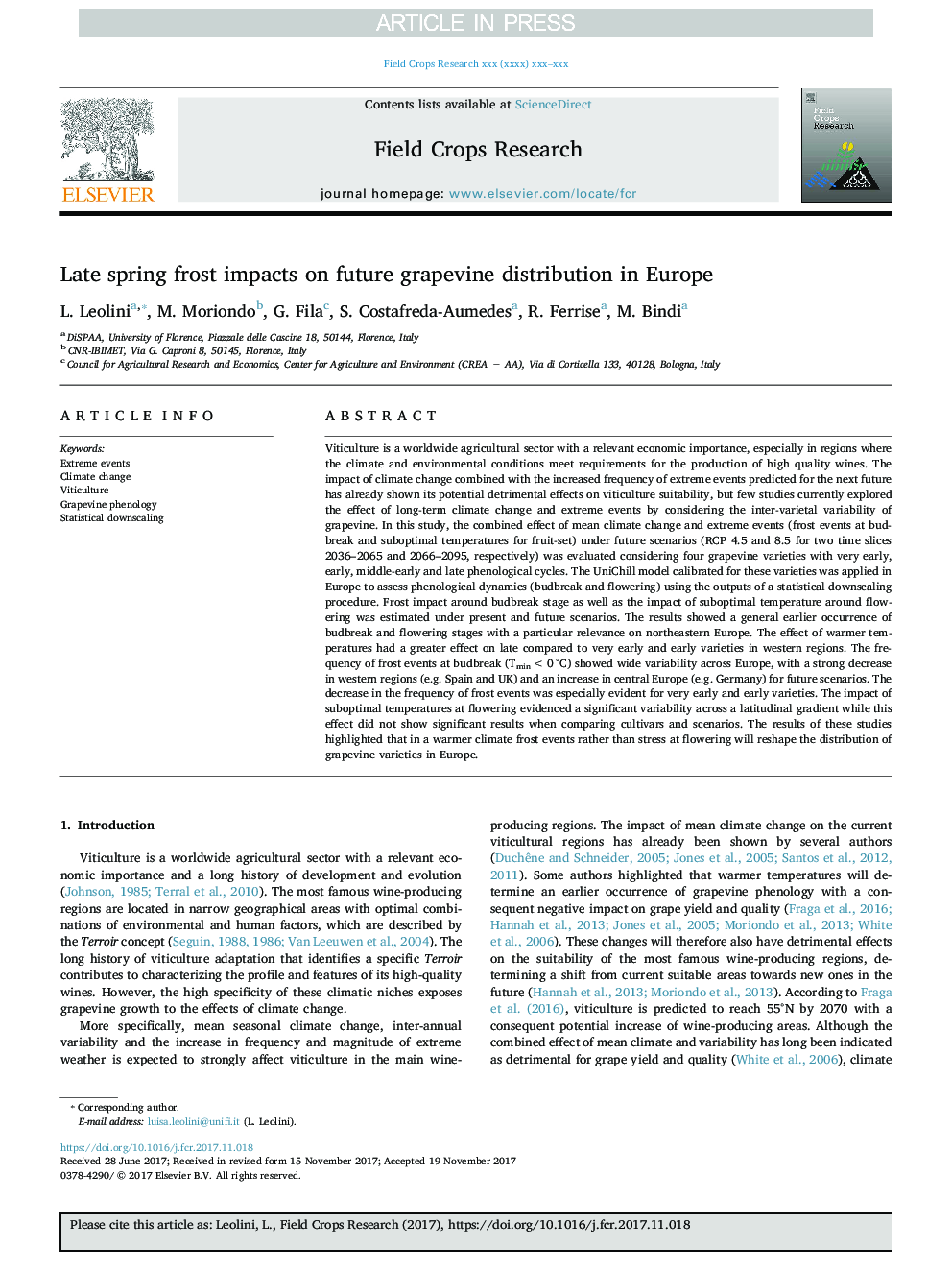| Article ID | Journal | Published Year | Pages | File Type |
|---|---|---|---|---|
| 8879201 | Field Crops Research | 2018 | 12 Pages |
Abstract
Viticulture is a worldwide agricultural sector with a relevant economic importance, especially in regions where the climate and environmental conditions meet requirements for the production of high quality wines. The impact of climate change combined with the increased frequency of extreme events predicted for the next future has already shown its potential detrimental effects on viticulture suitability, but few studies currently explored the effect of long-term climate change and extreme events by considering the inter-varietal variability of grapevine. In this study, the combined effect of mean climate change and extreme events (frost events at budbreak and suboptimal temperatures for fruit-set) under future scenarios (RCP 4.5 and 8.5 for two time slices 2036-2065 and 2066-2095, respectively) was evaluated considering four grapevine varieties with very early, early, middle-early and late phenological cycles. The UniChill model calibrated for these varieties was applied in Europe to assess phenological dynamics (budbreak and flowering) using the outputs of a statistical downscaling procedure. Frost impact around budbreak stage as well as the impact of suboptimal temperature around flowering was estimated under present and future scenarios. The results showed a general earlier occurrence of budbreak and flowering stages with a particular relevance on northeastern Europe. The effect of warmer temperatures had a greater effect on late compared to very early and early varieties in western regions. The frequency of frost events at budbreak (Tmin <0 °C) showed wide variability across Europe, with a strong decrease in western regions (e.g. Spain and UK) and an increase in central Europe (e.g. Germany) for future scenarios. The decrease in the frequency of frost events was especially evident for very early and early varieties. The impact of suboptimal temperatures at flowering evidenced a significant variability across a latitudinal gradient while this effect did not show significant results when comparing cultivars and scenarios. The results of these studies highlighted that in a warmer climate frost events rather than stress at flowering will reshape the distribution of grapevine varieties in Europe.
Related Topics
Life Sciences
Agricultural and Biological Sciences
Agronomy and Crop Science
Authors
L. Leolini, M. Moriondo, G. Fila, S. Costafreda-Aumedes, R. Ferrise, M. Bindi,
